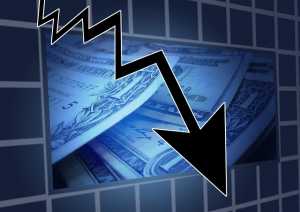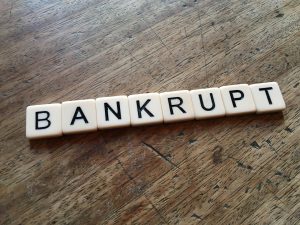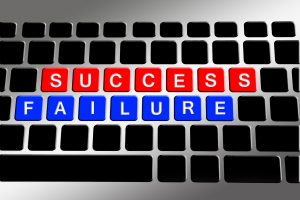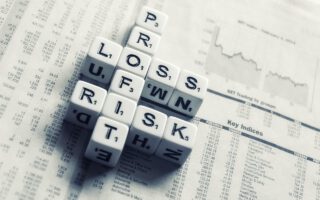No-one wants to lose money. It is tough and painful to see your hard earned money shrivel away. When investing, you want your money grow. You want high returns and sometimes you want to be better than the others. But it can also be different – very different! Then you are firmly convinced about making the big money, but in fact you lose nearly everything. Today I talk about how I lost 98% of my investment and what I learned from it!

I have the luck – or bad luck – to have witnessed some big market set-backs of the last 25 years. It is bad luck, because seeing the market value of your investments shrink is really painful and when you’re young it could be hell. It is luck, because I have the advantage of experiencing these tough situations and learn from them.
Being part of these market setbacks gave me the chance to know how it is and to learn to handle them. In one market set-back I lost 98% of my investment and I had two ways to deal with them: Leaving the stock market forever and never coming back or learning about the mistakes I made back then.
Learning from other’s mistakes is much less costly and more efficient than learning from your own mistakes. (Charlie Munger)
Even great fundamentals can become overpriced and thus give way to massive losses. (Howard Marks)
Why I talk about it?
Since the subprime crises in 2008, we’re living in bull market. Market prices only know one direction: upward. And that’s great, because you could have made a lot of money since then. But it’s a huge problem, too, because there are many new market participants who haven’t the experience of a falling market. After every little set-back they’re asking if that’s the beginning of a crash. The other side of the medal is that people losing sight of risk or try to ignore it.
I recently read that people like to compare the current high price of the market with the ones right before the dot-com bubble around 2000, but such a comparison wouldn’t make sense, because the situation is different as well as the companies. In some way a comparison really don’t make sense. In another, it makes. But that’s not my point. Reading about that topic made me think of my biggest loss during my investment career.
After I wrote about my success with Foot Locker in the beginning of this year, I think it would be more than fair to talk about one of my failures. And as Charlie Munger says: “Learning from other’s mistakes is much less costly and more efficient than learning from your own mistakes.”
How my experience began
In the 90s, especially at the end of the decade, IT companies were shooting stars. Technological developments such as the Internet, mobile phones and so-called handheld computers seemed to offer incredible possibilities. Many newly established companies jump on the train to get a piece of the cake and after a short while they went public. Investors showed great interest in these companies and their shares, as they were convinced to invest in high growth companies. More and more investors wanted to participate in the outstanding prospects and they entered. Either to participate in the future profits of these companies or to make the fast money by reselling increased shares.
Towards the end of the century, starting in 1999, the stock exchange valuation of several companies multiplied within a few months. More and more people who had never invested in the stock market entered it now. I, too, succumbed the urge of the herd and I put money into a company called SCM Microsystems.
SCM Microsystems
At that time, I was still learning about the stock exchange and had not yet found my strategy. I read the tips in the newspaper and listened to the advice given by supposed experts. I knew nothing about SCM Microsystems but the name and that I liked. Why I liked it, I couldn’t still say. It was just like that. Probably I just listened to some experts who said SCM was I really great company. So, I bought shares of this company at a price much too high. I didn’t know back then, but I know today.
But the best thing was, the price continued to rise and I thought, no, I was certain, everything was all right. The most of us didn’t take a serious look at the company’s figures and the evaluations that resulted from them. I ignored the figures of companies, too. In addition, we had no idea of the company’s products and the real value of it. We couldn’t estimate the future prospects. We saw a “.com” and bought.
The problem with the fundamentals
So, we didn’t realize, that there was no real value behind the market value. The book value of many companies consisted of not much more than a few buildings and the IT infrastructure. Towards the end of the boom, it was gradually becoming clear that the highly valued companies would not meet the expectations the market had set for them. Finally, companies began to go bankrupt, because of the lack of profitability.
The first sales of stocks began and finally the market collapsed as many of the inexperienced stock holders panicked and sold their shares at any cost to keep their loss low. Other small investors, like myself, assumed that the prices would go up again and didn’t sell early enough. I ended up losing 98% of the money I invested in SCM Microsystems after having had a great profit, but didn’t take it, because I couldn’t resist my greed and my hunger for more.
 Why didn’t the prices go up again?
Why didn’t the prices go up again?
The answer is very simple. The prices didn’t rise again, because the companies behind the stocks didn’t justify an increase. The fundamental data didn’t permit a higher valuation of the companies and in the end shares always reflect the actual value of the company. Without substance there is no value.
In the hot phase of the boom, the companies were strongly overvalued. The good ones as well as the bad ones. Nobody made a difference. Entering the market at this time was basically irresponsible. Prices were so high that they sooner or later had to go down. The probability that an overvalued stock becomes more overvalued is very low. But no one wanted to see it. Me. too. We rather relied on uncertain speculation about something that could not be estimated. We relied on the testimony of so called experts who believed that they knew where all these companies would go.
I mostly relied on it, because I had no idea of these companies. I didn’t made my homework and I didn’t saw that SCM was outside my circle of competence.
My mistake and what I learned
I lost my money on SCM Microsystems, because I wanted to be part of the boom without knowing enough about what the companies are doing and without looking at the value of the company. I ran greedily with the herd and ended up like it. Unfortunately, I paid for my mistakes and greed.
But in return, I got something really valuable. Back then I’ve learned, that I have to control my emotions. What ever it takes, I mustn’t give in to greed and anxiety. Both haven’t disappeared. They are part of my daily investment life, but I try to keep them under control. I don’t give in to them, because my decisions aren’t emotionally driven. I try to decide rationally on the facts of a company and stick to my system whatever it takes. And I only watch out for companies that I am able to understand.
I also learned that even a good company could be a bad investment, if I pay too much. I also bought Amazon back then and the market price of Amazon also decreased. But like SCM, I didn’t sell the shares. Fortunately, unlike SCM, Amazon began to rise again. But it took around 8 years for the share to reach its height from 1999, only to fall again during the subprime crises.
Are these times different?
Maybe you can’t compare the dot-com bubble with the current high prices. And maybe not every high priced company will perish in the next crash. But nevertheless, market prices are high and all too often don’t nearly reflect the intrinsic value of the companies. Over the long run, prices tend to reflect the intrinsic value of a company. Buying too expensive all too often ends up in losing money, regardless of the quality of the company.
The good news is, as I talked about in my post about Foot Locker that you still can find buying opportunities during high price times. But be careful! Not every opportunity is promising. And not every price is justified.


